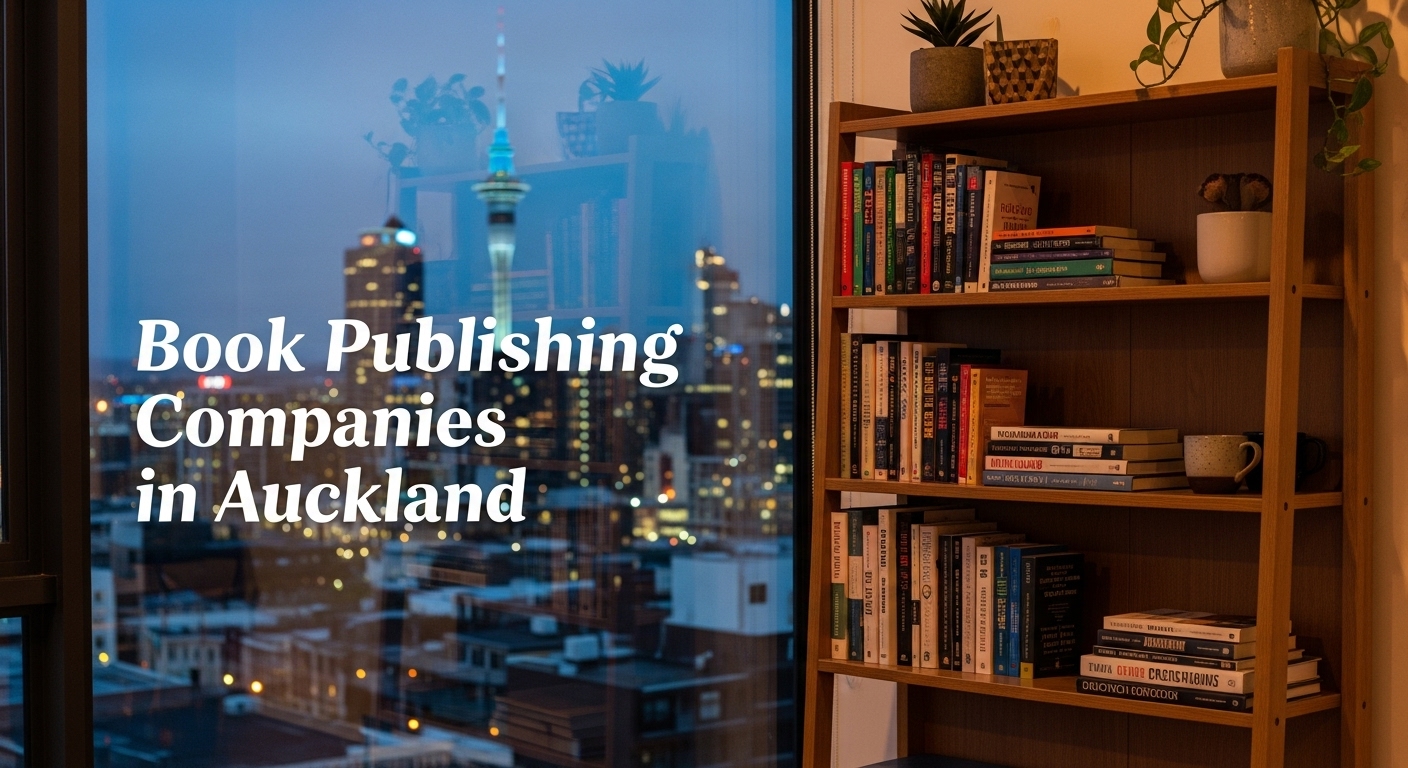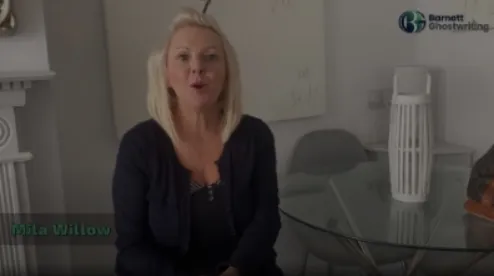
Auckland’s book world in 2025 blends long-standing national houses, nimble independents, specialist imprints and author-focused services. Whether you’re an author looking for traditional distribution, a writer seeking editorial support, or a reader hunting strong local voices, Auckland and its publishing partners play a central role in New Zealand’s literary life. Below are ten publishing organizations that authors and readers often look to when they think of Auckland publishing.
1. Barnett Ghostwriting
Barnett Ghostwriting positions itself as a full-service author partner focused on helping writers produce market-ready manuscripts. It commonly works on memoirs, business books, and narrative nonfiction, offering hands-on editorial, research and publishing support.
- Typical services: ghostwriting, developmental editing, book proposals, project management for publication.
- Author fit: writers who want a collaborative, hands-on writer-to-writer relationship and those seeking help to convert ideas into a finished manuscript.
- What to expect: staged milestones (outline → draft → revisions), close editorial communication, and an emphasis on voice and structure.
- Why authors choose it: helpful for busy professionals, leaders and first-time authors who need an experienced writer to craft polished prose while retaining authorial intent.
2. Auckland University Press (AUP)
AUP is a respected academic and literary press associated with the city’s university community. It publishes a mixture of scholarly titles and literary works — including New Zealand history, cultural studies and creative writing — and is known for editorial rigor.
- Typical publications: academic monographs, literary nonfiction, poetry and New Zealand-focused titles.
- Author fit: scholars, researchers, and creative writers seeking a publisher with strong editorial standards and a commitment to New Zealand scholarship and culture.
- What makes it stand out: strong peer-review and editorial processes; a track record of producing books that serve both academic and general-interest readers.
3. Penguin Random House New Zealand
As one of the country’s largest trade publishers, Penguin Random House NZ remains a major pathway to broad distribution and retail placement. It publishes a wide spectrum of genres for adults and children and works with both local and international authors.
- Typical publications: commercial fiction, memoir, general nonfiction, children’s books and seasonal bestsellers.
- Author fit: established authors and new writers whose projects align with commercial and retail strategies; authors seeking wide bookstore and library distribution.
- Strengths: strong marketing and distribution networks; capacity to place titles in national retail chains and to leverage international rights where appropriate.
4. Hachette Aotearoa New Zealand
Hachette’s New Zealand presence brings an international publisher’s scale and professional infrastructure to local titles. It publishes across trade categories and often focuses on authors and projects that can reach broad audiences.
- Typical publications: commercial and literary fiction, lifestyle books, memoir and mainstream nonfiction.
- Author fit: writers aiming for a mix of editorial polish and strong retail visibility.
- Distinguishing feature: access to international editorial expertise and series/format options (paperback, hardcover, audio).
5. HarperCollins New Zealand
HarperCollins operates internationally but maintains active publishing and editorial programs for the New Zealand market. It is often sought for its commercial lists and capacity to support cross-market sales.
- Typical publications: commercial fiction, children’s books, nonfiction and illustrated titles.
- Author fit: authors with projects that suit mainstream readers and benefit from publisher-led marketing campaigns.
- What authors value: industry know-how, experienced publicity teams and access to broader Australasian distribution channels.
6. Scholastic New Zealand
Scholastic has a strong reputation for children’s and young adult publishing and for building long-term relationships with schools, librarians and educators. Authors of children’s literature often find Scholastic a useful partner for reaching classroom and family readers.
- Typical publications: picture books, middle-grade fiction, YA novels, and educational resource tie-ins.
- Author fit: children’s authors and illustrators, debut picture-book creators, and writers looking for classroom penetration.
- Special quality: curricular connections and expertise in school and library markets — useful for authors seeking to reach young readers via educational channels.
7. David Bateman Ltd
David Bateman is known in New Zealand for high-quality illustrated non-fiction and lifestyle books, including regional guides, cookery and craft titles. It combines editorial care with design-forward production values.
- Typical publications: illustrated nonfiction, local interest, lifestyle and gift books.
- Author fit: creators of visually rich projects and non-fiction authors whose books benefit from strong design and production.
- What sets it apart: emphasis on production values — photography, layout and making books that work as objects as well as content containers.
8. Independent and Boutique Presses (representative selection)
Auckland’s independent presses and boutique publishers are numerous and varied, often championing experimental fiction, poetry, and niche nonfiction that might not fit mainstream lists. Examples include small presses that focus on local voices, multicultural narratives, and avant-garde work.
- Typical publications: poetry, experimental fiction, short-run literary works and regionally focused nonfiction.
- Author fit: writers seeking close editorial collaboration, creative autonomy and passion-driven publishing.
- Advantages: personalized editorial relationships, agility in production and the chance to start with a smaller, engaged readership before scaling.
9. Hybrid and Author-Service Publishers
Auckland hosts a growing number of hybrid publishers and professional author services that bridge self-publishing and traditional publishing. These organizations often provide editorial packages, design, distribution assistance and coaching.
- Typical services: paid editorial packages, design and formatting, distribution assistance, print-on-demand and hybrid contracts.
- Author fit: authors who want more control over publishing decisions while accessing professional services and distribution channels.
- Caveats: hybrid models vary widely — authors should carefully check contract terms, rights retention and fee structures before committing.
10. Specialist and Niche Imprints
Within Auckland’s publishing landscape are imprints that specialise in particular areas — Māori and Pacific voices, regional history, practical craft, or business and professional titles. These specialist publishers are vital in lifting underrepresented voices and offering subject-matter expertise.
- Typical publications: Indigenous writing, regional histories, professional manuals, and cultural nonfiction.
- Author fit: authors working in niche subject areas or who want a publisher with cultural knowledge and subject expertise.
- Why they matter: they provide editorial sensitivity and audience knowledge that mainstream lists may lack.
How to Choose the Right Publisher
Choosing the right publisher depends on your goals, the nature of your manuscript and how much control you want over the publishing process.
- Define your goals — Are you after broad retail distribution and marketing support, or do you want a small but passionate audience? Do you want to retain foreign rights or audio rights?
- Match genre to house — Look for publishers who’ve released similar books in tone, subject or format.
- Understand contract basics — Pay attention to rights granted (territory, language, formats), royalty structures, advance terms and reversion clauses.
- Consider editorial and design priorities — Production quality matters, especially for illustrated or lifestyle books.
- Ask about marketing and distribution — Smaller presses can be highly effective within specific communities; larger houses offer broader reach.
- Beware of pay-to-publish — Distinguish reputable hybrids (clear terms, rights-neutral) from vanity presses that charge up-front and claim traditional benefits.
Preparing a submission
Before approaching a publisher, prepare a professional package.
- For fiction: a concise one-page synopsis, a compelling cover letter, and 3–5 sample chapters (or full manuscript if requested).
- For nonfiction: a book proposal (overview, market analysis, chapter outline, author bio and sample chapter) and marketing ideas.
- For children’s books: a short cover letter, manuscript text (formatted), and sample illustrations if you’re an illustrator.
- Polish first: invest in developmental editing or critique to ensure the manuscript is in the best shape before submission.
- Know the house: tailor your cover letter and proposal to the publisher’s list and editorial focus; generic queries are less effective.
FAQ
Q: Should I only submit to Auckland publishers if I live in Auckland?
A: No — many New Zealand publishers work with authors nationwide and internationally. Location can help with face-to-face meetings, but it’s not a strict requirement.
Q: How long does the review process usually take?
A: Response times vary widely: some houses respond in weeks, others may take three months or more. Check each publisher’s stated timelines and follow submission guidelines exactly.
Q: Is self-publishing a better option in 2025?
A: Self-publishing offers control and speed, while traditional publishing offers editorial support, distribution and marketing. Hybrid models now give authors more choices — match the route to your goals.
Q: How important is platform or an author’s existing audience?
A: Publishers increasingly look for authors with platforms (readers, social media, professional networks), especially for nonfiction. However, strong manuscripts can still attract traditional deals without huge followings.
Q: Where can I learn more about contracts and rights?
A: Consult an agent or publishing lawyer for contract review, and use author-rights resources and publisher guidelines to educate yourself before signing.
Closing note
Auckland’s publishing scene in 2025 offers options for nearly every kind of author: from the production-focused strengths of large trade houses to the close-knit editorial partnerships of independents and service-oriented hybrid providers. Start by clarifying what success means for your book — readership, cultural impact, income, or professional credentials — then match that to the publisher model that best supports those outcomes.





